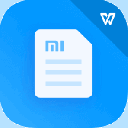








Best Arduino Projects

Best Arduino Projects açıklaması
Arduino is an open-source prototyping platform based on easy-to-use hardware and software. Arduino boards are able to read inputs - light on a sensor, a finger on a button, or a Twitter message - and turn it into an output - activating a motor, turning on an LED, publishing something online. You can tell your board what to do by sending a set of instructions to the microcontroller on the board. To do so you use the Arduino programming language (based on Wiring), and the Arduino Software (IDE), based on Processing.
That actually says it all.
You can find the complete introduction here.
Maybe a little more information about the board:
The Arduino Board itself is a blue circuit board, the size of a credit card (but they also have models in other sizes). It has two rows of connectors (the 'headers'), a power connector and a USB connector. The brain of the board is an Atmel microcontroller. It's like a really small, very low power 'computer'. (It only has 32KB of storage, 2KB of RAM, and the 8-bit processor runs at only 16MHz.) For most applications, however, this is more than enough. The pins of the processor connect to the headers, and you can connect them to virtually anything you can imagine. You just need to write some lines of code to control them. The I/O pins (Input/Output) can be used as input pins, to connect buttons or knobs, temperature sensors, light sensors, or even keyboards and mouses, digital musical instruments … or they can be used as output pins, to connect LEDs, drive motors, control the lights in your home, connect to small displays or even connect to the Internet, so that it can check your mail, post tweets ... Through the USB connection you can also use it to control your computer, or use your computer to control the Arduino.
As you can see, the sky's pretty much the limit !
Arduino is a popular open-source development board for engineers and makers to develop electronics projects in an easy way. It consists of both a physical programmable development board (based on AVR series of microcontrollers) and a piece of software or IDE which runs on your computer and used to write and upload the code to the microcontroller board.
Explore below some interesting arduino projects and tutorials based on different types of arduino baords like Arduino Uno, Arduino Pro Mini, etc. These DIY arduino projects for beginners are explained well and you can find the complete guide to DIY these projects with the help of circuit diagrams, source codes and videos. You can also browse below pages to get new arduino project ideas.
Arduino kolay kullanımlı donanım ve yazılım dayalı bir açık kaynak prototipleme platformudur. Bir sensör, bir düğmeye bir parmak ya da bir twitter mesajında ışık - - ve bir çıkış çevirmek - Online şey yayınlama, bir motoru aktive bir LED açmadan Arduino tahtaları girişler okumak mümkün. Sen gemide mikro denetleyiciye bir dizi talimat göndererek ne yapacağını kurulu söyleyebilir. Bunu yapmak için size İşleme dayalı (Kablolama göre) Arduino programlama dili ve Arduino Yazılımı (IDE) kullanır.
Bu aslında her şeyi söylüyor.
Burada tam bir tanıtım bulabilirsiniz.
yönetimhakkında Belki biraz daha bilgi:
Arduino Kurulu kendisi mavi devre kartı, kredi kartı büyüklüğünde (ama aynı zamanda diğer boyutlarda modelleri var). Bu konnektörleri iki sıra ( 'başlıkları'), güç bağlantısı ve bir USB konektörü bulunur. kurulu beyin bir Atmel mikrodenetleyici olduğunu. Bu gerçekten küçük, çok düşük güç 'bilgisayar' gibi. (Sadece depolama, RAM 2KB'den 32KB sahiptir, ve 8-bit işlemci sadece 16MHz çalışır.) Bir çok uygulama için, bununla birlikte, bu kadar daha fazladır. işlemcinin pin başlıklarına bağlanmak ve hayal edebileceğiniz hemen hemen hiçbir şey onları bağlayabilirsiniz. Yalnızca onları kontrol kod bazı satırları yazmak gerekir. I / O pin (giriş / çıkış), giriş fişi olarak kullanılabilir düğmeleri ya da düğme, sıcaklık sensörleri, ışık sensörleri, hatta klavye ve fareler, dijital müzik aletleri bağlamak için ... ya da çıkış pini olarak kullanılabilir, bağlamak LED'ler, tahrik motorları, evinizdeki ışıkları kontrol küçük ekranlara bağlayın ya da e-postalarınızı kontrol edebilir, böylece bile, İnternet'e bağlanmak, post tweetleri ... Ayrıca bilgisayarınızı kontrol için kullanabilirsiniz USB bağlantısı sayesinde, ya Arduino kontrol etmek için bilgisayar kullanın.
Gördüğünüz gibi, gökyüzünün hemen hemen sınırı!
Arduino kolay bir şekilde elektronik projeler geliştirmeye mühendis ve yapımcıları için popüler açık kaynak geliştirme kartıdır. O (mikroişlemcisi AVR serisine dayanan) bir fiziksel programlanabilir gelişme kurulu ve bilgisayarınızda çalışan ve yazmak ve mikrodenetleyici kuruluna kodu yüklemek için kullanılan yazılım veya IDE bir parça hem oluşmaktadır.
Yeni başlayanlar için bu DIY arduino projeleri de açıklanmıştır vb Arduino Uno, Arduino Pro Mini, gibi arduino baords farklı türleri dayalı bazı ilginç arduino projeleri ve öğreticiler aşağıda keşfedin ve devrenin yardımıyla bu projeleri DIY tam bir rehber bulabilirsiniz diyagramlar, kaynak kodları ve videolar. Ayrıca yeni Arduino projesi fikir edinmek için sayfaların altına göz atabilirsiniz.
Arduino is an open-source prototyping platform based on easy-to-use hardware and software. Arduino boards are able to read inputs - light on a sensor, a finger on a button, or a Twitter message - and turn it into an output - activating a motor, turning on an LED, publishing something online. You can tell your board what to do by sending a set of instructions to the microcontroller on the board. To do so you use the Arduino programming language (based on Wiring), and the Arduino Software (IDE), based on Processing.
That actually says it all.
You can find the complete introduction here.
Maybe a little more information about the board:
The Arduino Board itself is a blue circuit board, the size of a credit card (but they also have models in other sizes). It has two rows of connectors (the 'headers'), a power connector and a USB connector. The brain of the board is an Atmel microcontroller. It's like a really small, very low power 'computer'. (It only has 32KB of storage, 2KB of RAM, and the 8-bit processor runs at only 16MHz.) For most applications, however, this is more than enough. The pins of the processor connect to the headers, and you can connect them to virtually anything you can imagine. You just need to write some lines of code to control them. The I/O pins (Input/Output) can be used as input pins, to connect buttons or knobs, temperature sensors, light sensors, or even keyboards and mouses, digital musical instruments … or they can be used as output pins, to connect LEDs, drive motors, control the lights in your home, connect to small displays or even connect to the Internet, so that it can check your mail, post tweets ... Through the USB connection you can also use it to control your computer, or use your computer to control the Arduino.
As you can see, the sky's pretty much the limit !
Arduino is a popular open-source development board for engineers and makers to develop electronics projects in an easy way. It consists of both a physical programmable development board (based on AVR series of microcontrollers) and a piece of software or IDE which runs on your computer and used to write and upload the code to the microcontroller board.
Explore below some interesting arduino projects and tutorials based on different types of arduino baords like Arduino Uno, Arduino Pro Mini, etc. These DIY arduino projects for beginners are explained well and you can find the complete guide to DIY these projects with the help of circuit diagrams, source codes and videos. You can also browse below pages to get new arduino project ideas.


























